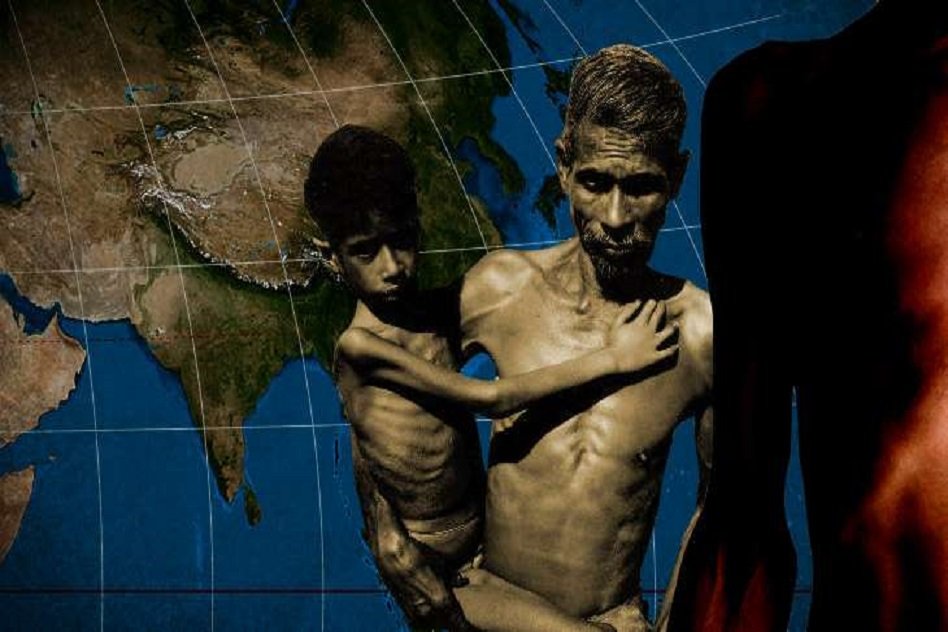
Our Country Is Poor, Starving And Undernourished: India Ranks 97th In Global Hunger Index
13 Oct 2016 10:29 AM GMT
India Ranks Abysmal 97 In Global Hunger Index
Widespread hunger to serious levels continues to grip India resulting the country to be ranked in an abysmal 97th position out of 118 developing nations in Global Hunger Index (GHI) calculated this year by the US-based International Food Policy Research Institute (IFPRI).
While India (97) and Pakistan (107) are the Asian countries to stand at the staggering bottom of the rankings, others neighbours are doing relatively better with China securing rank 29, Nepal (72), Myanmar (75), Sri Lanka (84) and Bangladesh (90). Countries worse than India include African nations such as Niger, Chad, Ethiopia and Sierra Leone. IFPRI calculates GHI by taking into account four key parameters: shares of undernourished population, wasted and stunted children aged under 5, and infant mortality rate of the same age group.
India’s score at the GHI stood 28.5, which is even worse than the developing country average score of 21.3. Brazil and Argentina have a GHI score of less than 5 and are ranked the best among developing nations, while countries like Chad and Central African Republic come at the bottom with a score of 44.3 and 46.1, respectively, the report says.
The IFPRI India has a “serious” hunger problem with 15.2% of its citizens undernourished and a staggering 38.7% of under-five children are stunted. The ranking basically reflects a widespread and chronic lack of balanced food in the country. The under-5 mortality rate is 4.8% in India. Despite the fact that India runs two of the world’s biggest children’s nutrition programmes, such data prove how inadequate nutrition is a major concern in the country. Endemic poverty, unemployment, lack of sanitation and safe drinking water, and lack of effective health care are main factors for the sorry state. Since the year 2000, the proportion of undernourished people has declined only marginally from 17% to current 15%.
According to Times Of India, India was ranked 83 in 2000 and 102 in 2008 with GHI scores of 38.2 and 36 respectively. This implies that while hunger levels in India have diminished somewhat, the improvement has been outstripped by several other countries. Hence India’s ranking is worse today than it was 15 years ago. In fact, Bangladesh was ranked 84 with a score of 38.5 in 2000, just below India. But in 2016, it has improved beyond India with a GHI score of 27.1 and a rank of 90 to India’s 97. According to the UN annual report 2014-15, India has the world’s highest number of hungry people in the world. India has 194.6 million hungry people compared with 133.8 million in China, of the total 795 million people in the world. In other words, one-fourth of the world’s hungry population live in India.
Wastage of foodgrains
In spite of hunger being such a widespread phenomenon in the country, in the last three years, the Food Corporation of India (FCI) has allowed 46,658 tonnes of food grains to rot in 1,889 warehouses across the country. Again, 143.74 tonnes were reported stolen. This much of foodgrains could have fed eight lakh people from priority families under the National Food Security Act for an entire year.
Hunger and other scales of economy
Not only hunger and malnutrition, poverty, education, employment are related to one another. India does not have any concrete figure oh how many of the primary educated youth in the country manages to bag a job. The GDP of the country might grow at 7.6 per cent(according to govt.) but unemployment remains to be an issue of great concern.
According to data from the Labour Bureau, the country’s unemployment rate has shot up to a 5-year high of 5 percent in 2015-16. This figure is significantly higher, at 8.7 percent, for women as compared to 4.3 percent for men.
It is high time that the government should take necessary measures to improve the conditions that reflect growth in the country. Not only introduction of schemes, more concentration, have to be given on how these schemes are working.
 All section
All section













